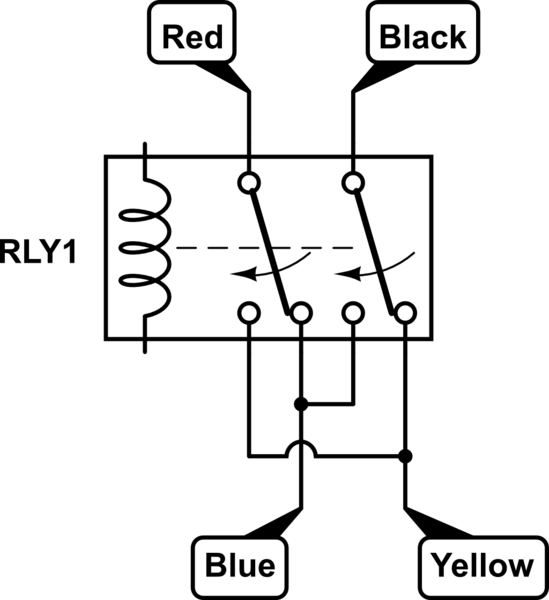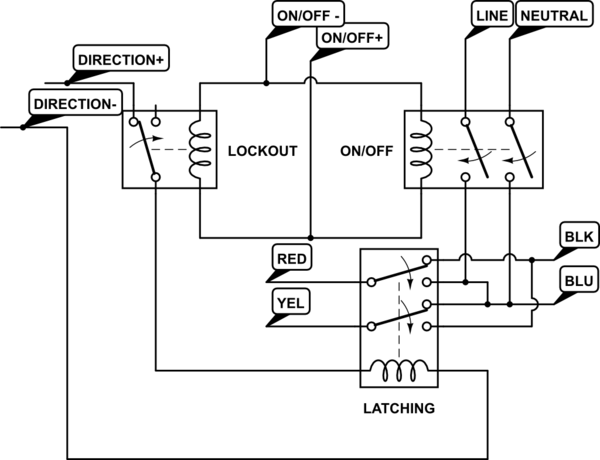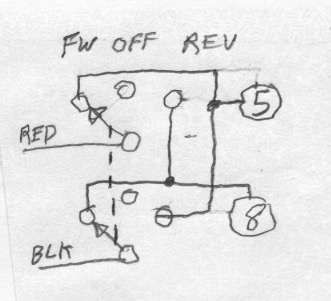How can one control on/off and direction for a single phase reversing AC motor using relays? I have wired an AC motor correctly with 5 wires: green (ground), red (live), black (neutral), blue (coil 1), and yellow (coil 2).
If AC current is passed between [red+blue] and [black+yellow] it spins clockwise.
If AC current is passed between [red+yellow] and [black+blue] it spins counterclockwise.
I understand that speed cannot be controlled with relays and do not need that. For a DC motor, I can use two relays and diodes to achieve this functionality as outlined by this question How to use a flyback diode on a +/-12V motor
If it helps, this is the motor I am using https://www.baldor.com/catalog/L3503#tab=%22drawings%22, but I think the suggestion should be generalizable (please explain if I am wrong and the suggestion is motor specific).




